06 August 2019
Austempered Ductile Iron Production Technology From Base Material Produced By Ferro-Casting Industry In Indonesia
Rianti Dewi Wulansari Sulamet Ariobimo, 2003 University of Queensland Abstract The quality of... Read More
The Australia Awards are prestigious, transformational scholarships and short courses offered to emerging leaders for study, research and professional development in Australia

19 Jun 2017
 Biological Oceanography of Larval Fish Diversity and Growth off Eastern Australia
Biological Oceanography of Larval Fish Diversity and Growth off Eastern Australia
Augy Syahailatua, 2005
University of New South Wales
Abstract
Biological aspects of larval fish may contribute significant information related to fishery resources management. Fish larvae in Australian waters have been studied progressively in the last 2-3 decades including many aspects, such as the distribution and abundance of taxa, growth and age, prey and predator. However, the number of larval studies in the nutrient starved Australia waters is little, compared with northern hemisphere studies. My study was aimed to examine the effect of natural or anthropogenic nutrients on the abundance, distribution, growth and condition of fish larvae along-shore of the NSW coast (latitude 30-34ºS). This study shows no significant difference in the total abundance or diversity of either larval fishes amongst the 112 taxa (111 families and 1 order), between regions within or upstream of the upwelling. However in both months, there were distinctive ichthyoplankton assemblages at the family level. The relative abundance of Carangidae, Labridae, Lutjanidae, Microcanthidae, Myctophidae and Scombridae were related to the EAC or oceanic water masses, while the Callionymidae, Clupeidae, Platycephalidae, Sillaginidae and Terapontidae were mostly found in the surface or deep upwelled/uplifted water masses. In sewage impacted areas, larval fish were found in significant numbers, however larval diversity was slightly less than in upwelled-water.
Larvae of silver trevally (Pseudocaranx dentex) and yellowtail scad (Trachurus novaezelandiae) were generally larger and less abundant in a topographically induced upwelling region, than north of the region in pre-upwelled conditions of the East Australian Current. Most of both species caught were in a preflexion stage (<4.3 mm in body length and <10 days old) in the pre-upwelled conditions, particularly during November, and proportionally more larger and older larvae in the upwelled waters (mostly post-flexion, >4.3 mm in body length and ≥10 days old). Ages from sagittal otoliths ranged from 2-25 increments and exhibited linear growth for both species and months over the size range (3-15 mm standard length). The otolith radius-length relationship and the growth rates were similar between species and months, despite the 3-4ºC difference between months. Overall growth rates of the younger larvae were uniform throughout the entire sampling area (0.5-0.6 mm.d-1), while older larvae grew significantly faster in the upwelled water (0.41±0.12 mm.d-1) compared to the non-upwelled conditions (0.34±0.11 mm.d-1). Both species tended to be enriched in δ13C in the upwelling region (from –18.5 to –19.0‰) indicating identical food sources of marine waters, whereas the δ15N composition tended to increase in Pseudocaranx, but decrease in Trachurus that indicate probably these two carangids species have different in their tropic level. The effects of larval size and the spatial effects probably confounded the comparison. The early life history of both species indicates spawning in pre-upwelled waters, but larval transport into upwelled waters is necessary for faster growth in the post-flexion stage.
The assemblage of larval fishes did differ between the upwelled region and a region south of Sydney’s deepwater outfalls, but the difference was ascribed to a latitudinal effect and the EAC. Both larval carangids were enriched in 15N, possibly due to the enriched dissolved organic matter of primary treated sewage.
To sum up, oceanographic dynamic off eastern Australia, particularly the strength of the EAC in spring-summer months can force the upwelling occurring in this region (30-34˚S), and bringing not only the warm water mass of tropics, but also the cold-rich nutrient water from the subsurface. This episode influences the ichthyoplankton abundance, diversity and growth in the region, yet to increase larval abundance and diversity and to stimulate larval growth faster. Comparing to the sewage impacted area of Sydney, the quite similar circumstances may occur in larval abundance, diversity and growth, but seemingly, larval fish fed on the preys affected by primary treated sewage.
Share this article on:
 Related Article
Related ArticleThis website uses cookies to improve your website experience. We may also use cookies to analyse website data so that we can improve our online services. To find out more visit our privacy policy.

